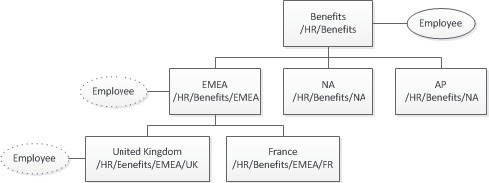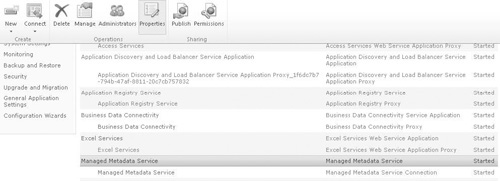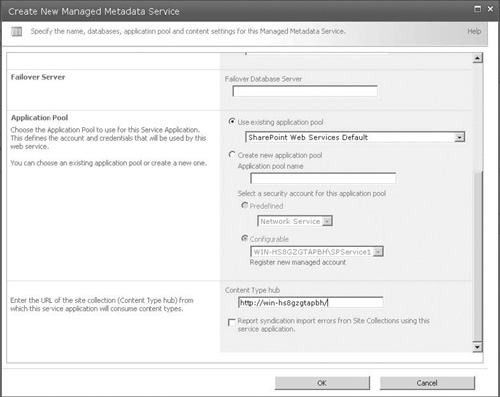3. Enterprise Content Types
Site collections and sites and the hierarchical nature of
these structures were discussed. This hierarchy also has implications
for content types, because content types are also inherited by child
sites. For example, if an organization creates a site collection named
HR with a root site of Benefits, a content type named Employee defined
on the Benefits site would be available to all child sites, no matter
where they sat within the hierarchy, as shown next:

This
cross-site scoping is an important feature in SharePoint, because it
facilitates the creation of centrally managed data structures. However,
while this inheritance works well within site collections, it doesn’t work across
site collections. From the preceding illustration, if another site
collection named Training existed with a root site of LearningCenter
that also wanted to make use of a common Employee content type, using
previous versions of SharePoint it would be necessary to create a new
content type on the LearningCenter site.
SharePoint Server 2010 introduces a new feature known as enterprise content types, and it’s aimed at providing an answer to this problem. To enable content type publishing, take the following steps:
Either create a new site collection that’s going to be the content type repository or use an existing site collection.
In the Site Settings page, select Site Collection Features and then activate the Content Type Syndication Hub feature.
Content
Type syndication makes use of the Managed Metadata service application
to distribute content types between connected applications. To specify
that our newly created Content Type Hub should be used by a particular
Managed Metadata Service application, select the appropriate service
from the Manage Service Applications page in Central Administration.
Click the Properties button in the ribbon, as shown next:

In the Create New Managed Metadata Service dialog, set the Content Type Hub URL to the appropriate site collection, as shown:

The
final step in configuring content type publishing is to enable it on
the appropriate Managed Metadata Service Connection. Select the
appropriate connection, and then click the Properties button on the
ribbon. Check the Consumes Content Types From The Content Type Gallery
option, as shown next:
